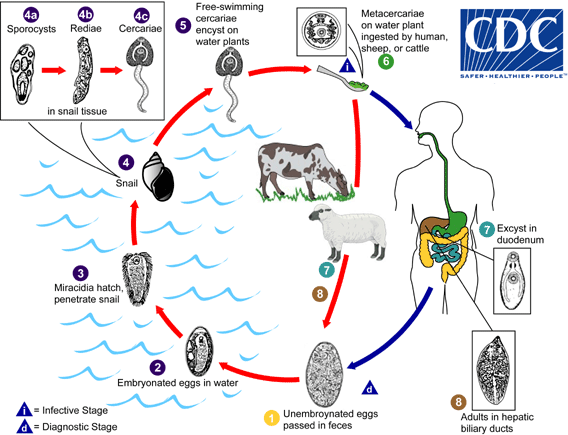Fil:Fasciola LifeCycle.gif
Hoppa till navigering
Hoppa till sök
Fasciola_LifeCycle.gif (568 × 435 pixlar, filstorlek: 58 kbyte, MIME-typ: image/gif)
Filhistorik
Klicka på ett datum/klockslag för att se filen som den såg ut då.
| Datum/Tid | Miniatyrbild | Dimensioner | Användare | Kommentar | |
|---|---|---|---|---|---|
| nuvarande | 9 juli 2015 kl. 21.05 |  | 568 × 435 (58 kbyte) | CFCF | updated |
| 10 maj 2006 kl. 18.59 |  | 568 × 435 (45 kbyte) | Patho | {{Information| |Description=Causal Agents: The trematodes Fasciola hepatica (the sheep liver fluke) and Fasciola gigantica, parasites of herbivores that can infect humans accidentally. Life Cycle: Life cycle of Fasciola hepatica Immature eggs are disch |
Filanvändning
Följande sida använder den här filen:
Global filanvändning
Följande andra wikier använder denna fil:
- Användande på ca.wikipedia.org
- Användande på ceb.wikipedia.org
- Användande på cs.wikipedia.org
- Användande på de.wikibooks.org
- Användande på es.wikipedia.org
- Användande på fr.wiktionary.org
- Användande på gl.wikipedia.org
- Användande på gl.wiktionary.org
- Användande på hi.wikipedia.org
- Användande på it.wikipedia.org
- Användande på kk.wikipedia.org
- Användande på ru.wikipedia.org
- Användande på sv.wikipedia.org
- Användande på vi.wikipedia.org
- Användande på vi.wiktionary.org

